When left unchecked, Google Ads can swiftly devour your budget, often quicker than people abandon their New Year’s resolutions. Even with top-notch copy, an impressive landing page, and a hot audience list, success with Google Ads can feel like an uphill battle. Without tangible results, your ad budget—and possibly your job—could vanish into thin air.
But don’t lose heart just yet. There’s always room for improvement in your Google Ads strategy. Whether you’re achieving record-high Return on Ad Spend (ROAS) or stuck in a rut, there’s a pathway to enhancement.
And the best part? Enhancements don’t always require monumental efforts. You can achieve better outcomes while expending less energy.
We’re sharing the essential Google Ads optimization techniques our PPC experts utilize to effectively manage multiple clients and skyrocket conversion rates by up to 600%—no exaggeration. We believe in working smarter, not harder. Plus, we’ll provide you with a handy Google Ads optimization checklist to ensure you know exactly when and how to optimize your campaigns for maximum impact.
Get ready to witness your account become the healthiest and most robust it’s ever been. So long, New Year’s resolutions—Google Ads domination awaits.
Google Ads optimization involves analyzing your account data and implementing changes to maximize performance.
Given the tremendous evolution of the digital marketing landscape, strategies and tests that were effective last month—or even last week—might now hinder performance.
For instance, a keyword that initially drove strong results may later inflate your cost-per-conversion (CPA). In response, you might choose to pause that keyword during optimization, redirecting focus towards keywords with lower CPAs.
Optimization also entails uncovering the secondary effects of your current settings and keywords. For example, a keyword might generate high conversion volume and a low CPA, but upon investigating the search terms it attracts, you realize they’re unrelated to your business. Suddenly, the influx of unqualified leads makes sense.
Regular optimization empowers you to stay informed about your Google Ads account and steer performance in the right direction.
Strategies to Optimize Google Ads:
1. Expand Your Horizons with Research and PPC Intelligence Tools

While conducting keyword research may seem daunting, the effort is worthwhile, especially considering the array of tools available today. If your account seems stagnant, it’s time to delve deeper and explore opportunities for expansion.
For those seeking a cost-effective solution, Google Ads Keyword Planner is a valuable resource. By inputting keywords—whether current targets or potentially relevant ones—it provides data and suggests similar keywords. Additionally, by entering your website, it can offer tailored keyword recommendations.
Keep in mind that Keyword Planner’s data is based on averages and doesn’t predict conversion likelihood. However, it does offer insights into average search volume and estimated cost per click, providing a solid starting point.
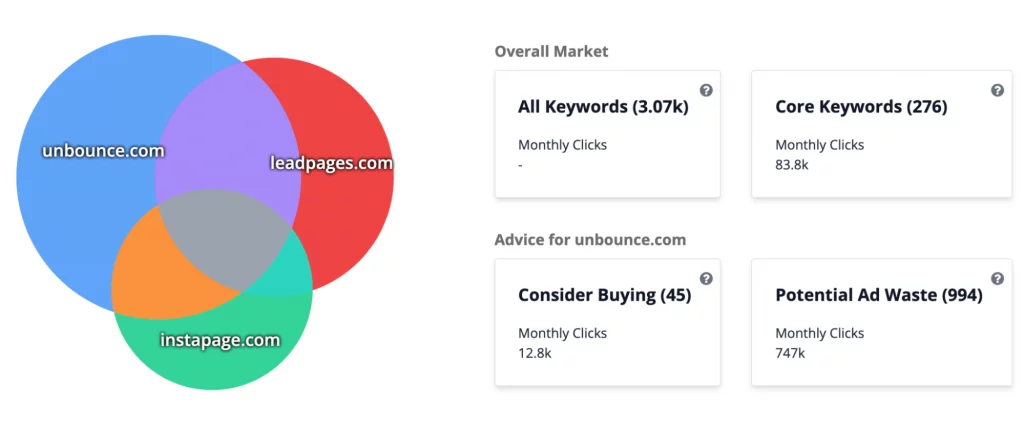
For more comprehensive research, several PPC spy tools are at your disposal. Take SpyFu, for instance, a favored platform for gaining insights into competitors’ strategies. SpyFu unveils keywords your competitors target, potentially uncovering untapped opportunities. Moreover, it reveals competitors’ ad strategies for their most successful keywords.
While SpyFu’s data is also based on averages and doesn’t specify conversion rates, knowing which keywords your competitors target can guide you towards valuable testing opportunities, offering a step beyond Keyword Planner.
Learn how much Google Ads cost here.
2. Enhance Control with Single Keyword Ad Groups (SKAGs)
Looking to maximize control over your Google Ads campaigns? Look no further than Single Keyword Ad Groups (SKAGs).
Don’t just take our word for it—consider the results achieved by our client, Mold Inspection Sciences, who slashed their cost per lead in half and boosted conversion volume by a staggering 300% through SKAG implementation and optimization. Impressive, right?
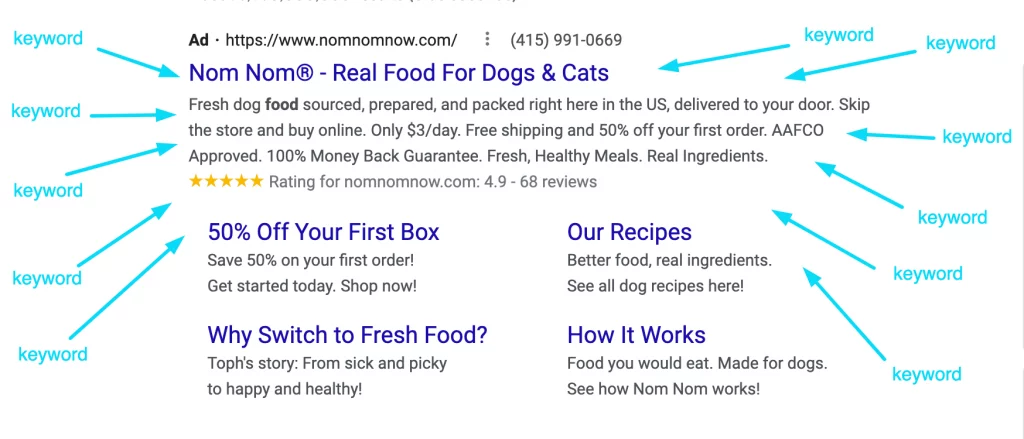
SKAGs empower you to meticulously manage every aspect of your campaign. By dedicating a single keyword to each ad group, you create a structure where each ad’s headline prominently features that keyword.
Here’s why SKAGs offer unparalleled flexibility and responsiveness:
When you adhere to Google’s recommendation of 10-20 keywords per ad group, your campaign can become cluttered with a multitude of keywords triggering a single set of ads, leading to what’s known as the Iceberg Effect.
In contrast, SKAGs maintain a 1:1 ratio of keywords to ads, ensuring that each ad is tailored to a specific keyword. This rapid relevance increases the likelihood of your ads being shown for relevant searches.
It’s no secret that Google favors ads that are highly relevant to user queries. With SKAGs, you’re positioned to deliver exactly that.
3. Refine Audience Targeting with Remarketing Lists for Search Ads (RLSAs)
Remarketing Lists for Search Ads is a powerful Google feature that enables you to overlay remarketing list audience targeting onto your search campaigns.
While many digital marketers associate remarketing lists primarily with display campaigns, RLSAs offer a unique opportunity to leverage these audiences in search campaigns. By layering remarketing audiences onto your search campaigns, you can narrow your keyword traffic to users who have already visited your site.
This approach grants greater flexibility in keyword selection. Are broad match keywords causing anxiety due to irrelevant searches? RLSAs provide a solution. By instructing Google to display ads only to users searching your keywords who have also visited your site, you enhance the qualification of potential customers.
Expanding your keyword reach to include broad match types within RLSAs can yield unexpected benefits. You may uncover new search queries from your remarketing list of users that were previously overlooked.
Consider these best practices when exploring RLSAs:
- Ensure your remarketing list is substantial, ideally comprising 5,000-10,000+ members, to maximize effectiveness.
- Test RLSAs by creating duplicates of existing campaigns rather than replacing them entirely.
- Run these duplicates alongside your current campaigns.
- Exclude your remarketing list from non-RLSA campaigns to prevent overlap and competition between campaigns.
4. Harness Prospecting Display Ads to Enrich Your Funnel
Investing in display ads may seem counterintuitive for driving conversions, as they primarily serve to raise awareness and exposure. However, adopting a holistic approach to your sales funnel is crucial for long-term success.
At the top of the funnel, where intent is less pronounced, the Google Display Network excels in capturing audience attention. While search ads target users close to conversion, display ads attract those in the early stages of brand or product discovery.
By recognizing the importance of both top-of-funnel and bottom-of-funnel strategies, you can cultivate a healthier account overall. Display ads complement search ads by widening the funnel and nurturing prospects toward conversion.
Although display ads may not directly drive conversions at the same rate as search ads, aligning your call-to-action and offer with your audience’s intent can enhance their effectiveness.
5. Align Your Call-to-Action with User Intent
Every stage of the conversion cycle corresponds to a different level of intent. For instance, visitors from display ads typically exhibit colder intents, necessitating colder Call-to-Actions (CTAs).
This concept is encapsulated in what we call the PPC thermometer. The goal is to discern which types of CTAs resonate best with your diverse audience segments.
Here’s the takeaway: the closer a visitor is to conversion (such as those from search), the warmer their intent, allowing for more assertive CTAs.
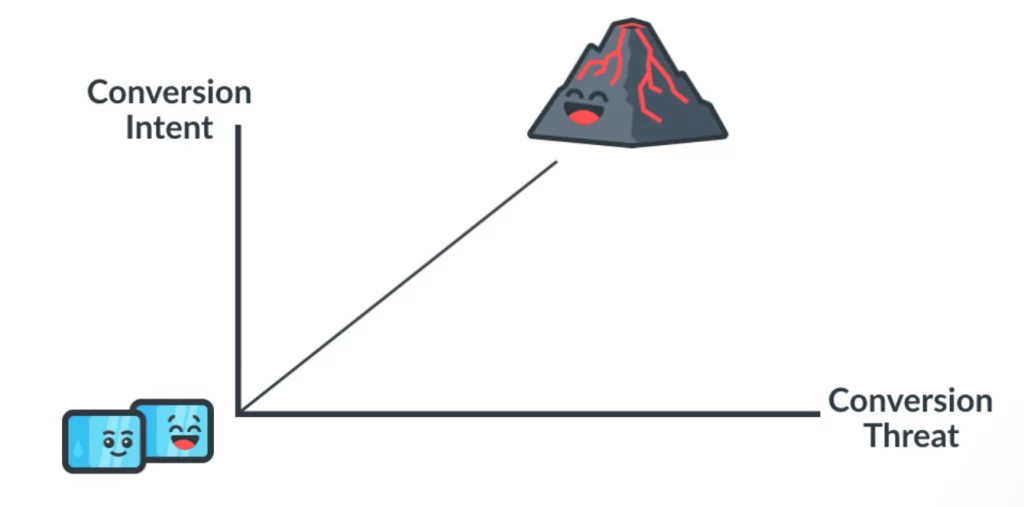
If a visitor arrives from a display ad with a colder intent, avoid presenting them with a high-threat request, such as soliciting personal contact information for a consultation.
These “ice cube” level visitors are often at the top of the funnel. Tailor your CTA and offer to suit this stage of the conversion cycle to potentially boost your click-through rate (CTR) and conversion rate for this audience.
Successfully aligning our CTA with the appropriate search temperature yielded impressive results for our client, Reliable Garage Door, including a 72% decrease in CPA and a 958% increase in conversion volume.
Consider these performance-driven CTA ideas that correspond to different stages of the action cycle:
For display campaigns, opt for less intimidating CTAs and offers, such as a free downloadable asset, requiring minimal personal information like name and email address.
While you may not immediately drive traffic to your most lucrative offer, providing valuable content reinforces your brand and product, positioning you favorably when prospects progress down the funnel.
6. Prioritize Metrics and KPIs Aligned with Your Main Business Goal
It’s easy to become fixated on micro metrics and lose sight of the bigger picture.
Avoid this trap by focusing on key performance indicators (KPIs) that directly impact your main business goal, such as revenue generation.
While metrics like quality score, impression share, and CPC are important, their significance lies in their contribution to your overarching goal—a sale.
Rather than getting bogged down in minutiae, assess whether your PPC campaigns drive revenue and increase profitability. Consider metrics like return on ad spend (ROAS) to gauge the effectiveness of your efforts.
Ensure your optimizations align with your primary objective: driving conversions that translate into sales. For lead generation campaigns, track offline conversions to attribute deals closed downstream to your Google Ads efforts, facilitating informed decision-making and optimizing performance.
7. Optimize Spending with Geolocation Targeting
Expecting uniform performance across all campaigns targeting the US or multiple countries and cities is unrealistic. Leaving locations unchanged simply because you want your ads to appear there or to cast a wider net may not be the most strategic approach.

Our guiding principle:
- Follow the data.
- Boost competitiveness in areas delivering results to improve ROI and conserve budget.
- Quickly assess each location’s performance through the “Locations” tab.
Adjust spending by location in three ways:
- Implement bid adjustments: Apply positive adjustments to high-performing locations and negative adjustments to underperformers.
- Remove poor-performing locations: Streamline locations by eliminating those draining resources while retaining profitable ones.
- Segment locations by campaign: Allocate more budget to campaigns focused on high-performing locations and reduce spending on campaigns with poor-performing locations.
- Optimize Spending with Dayparting
Continuously displaying ads 24/7, despite conversions primarily occurring during specific hours, could be more efficient. Utilize time reports to identify conversion patterns throughout the day and week.
While Google’s smart bidding may prioritize times of high conversion, excluding non-converting hours can yield significant savings.
You can customize ad schedules by accessing the “Ad Schedule” tab within each campaign and adjusting bids accordingly to target optimal times.
8. Refine Targeting with Demographic Insights
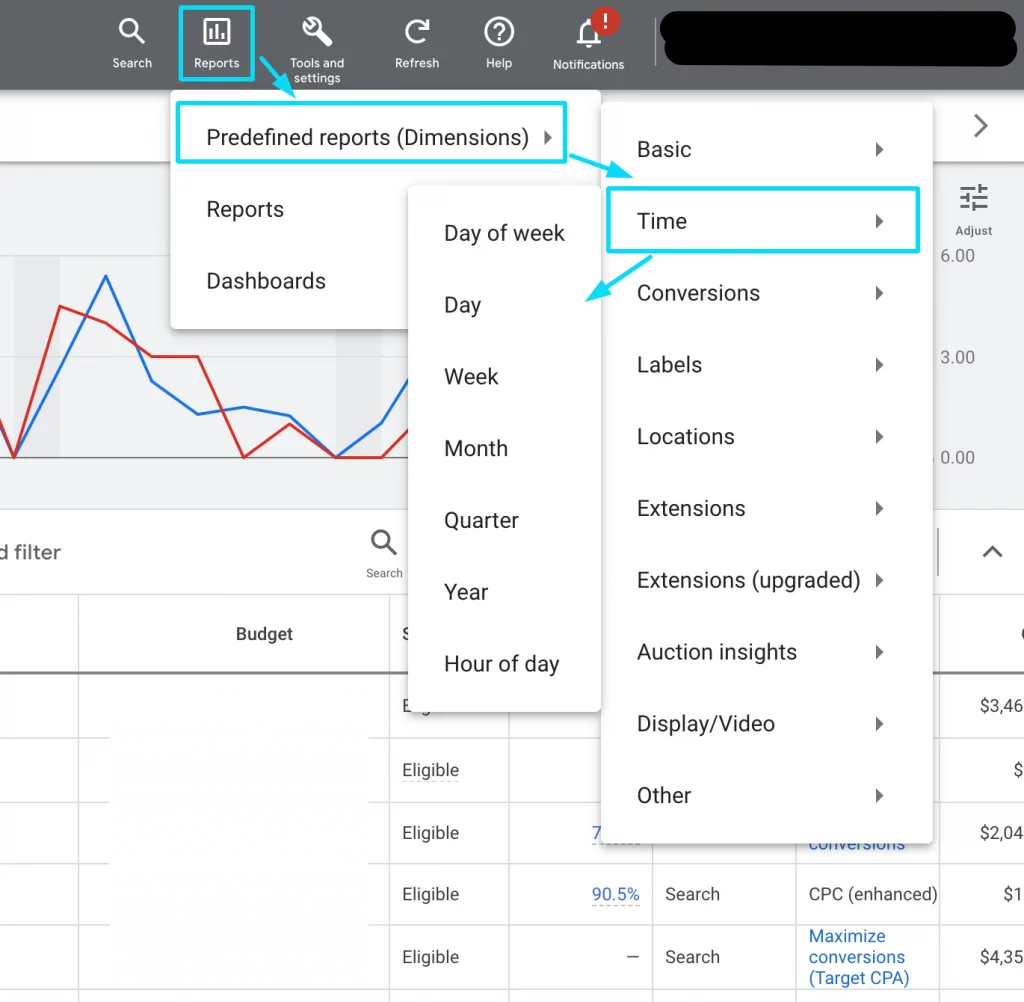
Performance can vary significantly across demographic segments such as household income, gender, and age.
Evaluate demographic data under each campaign’s “Audiences” tab, analyzing conversion metrics by age, gender, and income.
Exclude or adjust bids for demographic segments with historically low conversion rates, ensuring the budget is allocated effectively.
Despite challenges posed by declining cookie tracking, identifying and optimizing spending based on demographic insights remains a valuable tactic for maximizing ROI.
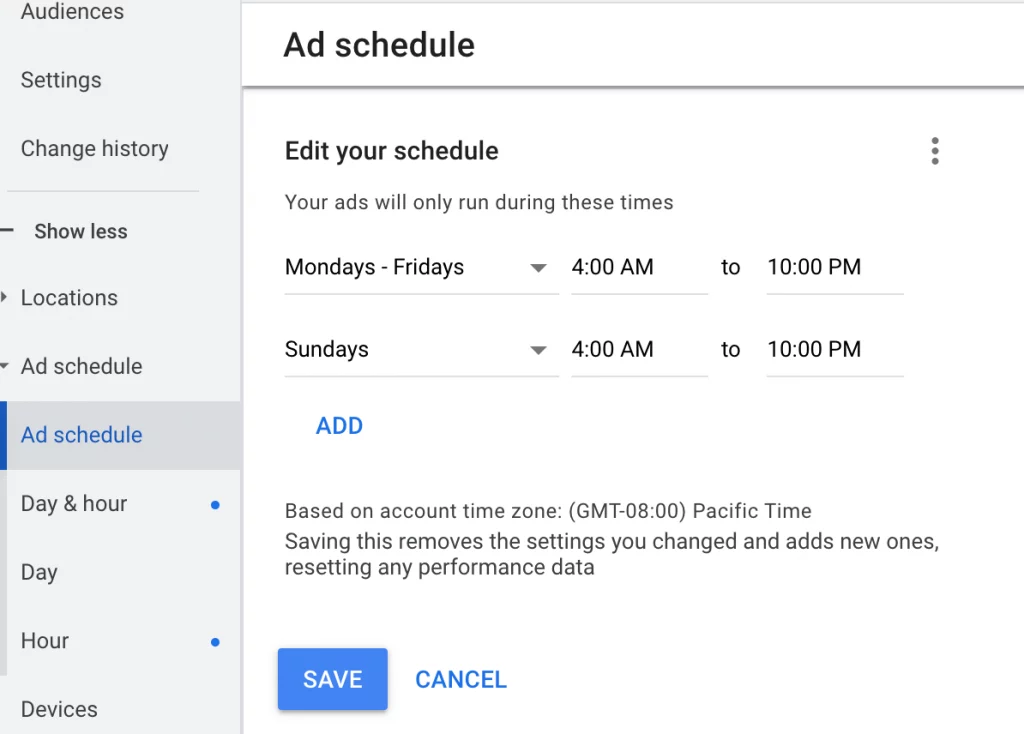
9. Evaluate the Value of Search Partners
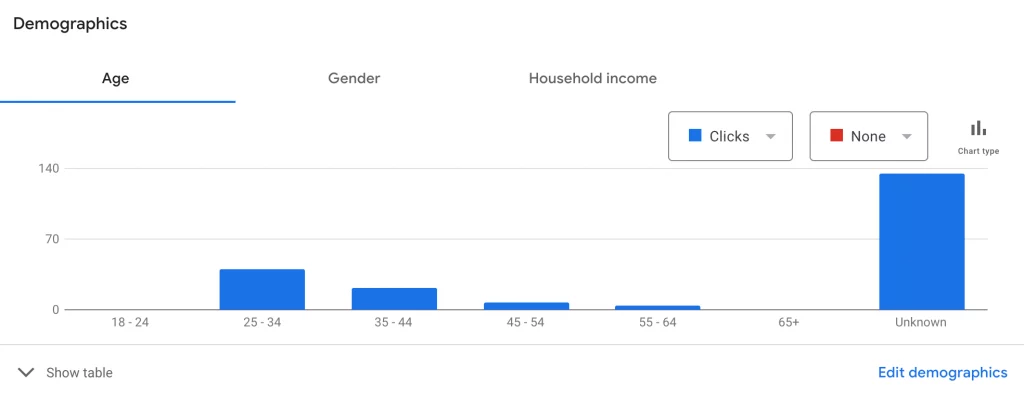
I recommend including search partners when setting up Google campaigns initially. However, their performance only sometimes meets expectations.
In certain industries, despite having effective landing pages to filter out irrelevant leads, you might still receive them—often from bots. We conducted tests where removing Search Partners resulted in a decrease in both leads.
If you’ve exhausted various solutions to address performance issues without success, consider testing the removal of Search Partners to refine your audience targeting. To remove search partners, uncheck the box under the Search Network.
10. Enhance Campaign Effectiveness with Bid Adjustments
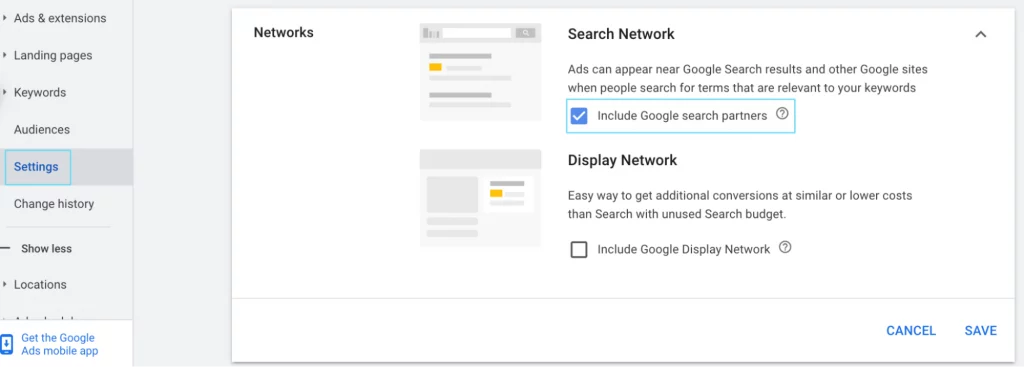
We’ve discussed implementing bid adjustments in several areas, including locations, ad schedules, and demographics. However, you can also apply bid adjustments to devices and audiences, which is particularly impactful.
If desktop performs best for your business while mobile searches lag, increase bid adjustments for desktop and decrease or apply negative bid adjustments for mobile. This ensures spending aligns with conversion sources.
Implementing bid adjustments on audiences can also yield significant benefits. You can do this even when audiences are in Observation Mode, meaning they’re not restricting your targeting. For instance, if the “business professionals” audience drives substantial conversions, raise your bid adjustment accordingly.
11. Enhance Relevance with Negative Keywords

It is essential to regularly review your search terms list to exclude any irrelevant terms. Keywords can attract a wide range of searches, often deviating from your intended target. While broad match types are particularly prone to this, even phrase match and exact match keywords can generate irrelevant traffic.
Incorporating negative keywords improves relevance and prevents you from paying for clicks with misguided intent. However, be cautious about delving only a little into this optimization task, as it can become time-consuming. Focus on search terms receiving clicks or high impressions, using Google Ads filters to highlight those with significant engagement.
12. Revamp and Broaden Your Keyword Portfolio
Despite initial enthusiasm, your keyword list may only sometimes yield optimal results over time. Data-driven insights are paramount for refining your keyword strategy.
Identify areas of wasted spend by evaluating all your keywords. While some may perform exceptionally well, others may need more resources to deliver results. Avoid becoming emotionally attached to keywords and rely on data to guide decisions.
Refinement should go hand in hand with expansion. Utilize PPC Spy Tools and research to uncover new opportunities. Additionally, leverage the search terms report to discover conversion data for potential keywords yet to be targeted.
For instance, if your eCommerce store sells “brown boots,” and the search terms report reveals conversions for “brown cowboy boots,” consider targeting this term. By capitalizing on conversion opportunities identified through search terms analysis, you can pursue targeted expansion with a higher likelihood of success.
13. Continuous Optimization: Always Test Your Ads
Ad testing is one of the most effective methods to keep your advertising strategies sharp and evolving.
Even if your current ads have performed admirably, they can still become stale over time. While it’s tempting to stick with what works, it’s crucial to keep refining your approach.
You don’t necessarily have to craft entirely new ad copies. Sometimes, a simple tweak, like changing headline 1 while keeping the rest of the ad intact, can yield significant results. By making incremental adjustments, you can precisely determine which changes drive improvements in performance.
For instance, Leasecake experienced a 67% increase in conversion rate and a 34% decrease in CPA through prudent ad copy A/B testing.
Remember, even if your ads are already effective, there’s always room for improvement.
Optimization Frequency: Finding the Right Balance
Knowing when and how often to optimize your Google Ads campaigns is essential for sustainable success. Making changes too frequently can disrupt the learning process and hinder performance improvements. Conversely, optimizing optimizations for a short time can lead to missed opportunities.
Here’s a breakdown of optimization frequency tailored to different aspects of your campaigns:
One-Time Optimizations:
- Implement SKAGs for granular control over keywords.
- Leverage RLSAs by creating dedicated campaigns for high-performing audiences.
- Launch display ads to target top-of-funnel audiences.
- Ensure alignment between your CTAs and traffic intent.
- Evaluate the performance impact of Search Partners and adjust accordingly.
Daily Optimizations: Monitoring and Adjusting
- Monitor for significant fluctuations in performance metrics.
- Analyze budget trends to ensure alignment with spending targets.
- Address disapproval alerts promptly to maintain ad visibility.
- Review bids and bid strategies to optimize performance within budget constraints.
Weekly to Biweekly Optimizations: Fine-Tuning
- Analyze search term reports or add negative keywords to filter out irrelevant traffic.
- Implement bid adjustments based on location, device, and audience performance data.
- Refine and expand your keyword list by removing underperforming keywords and adding new opportunities.
Monthly Optimizations: Strategic Adjustments
- Test new ads and evaluate past tests to refine messaging.
- Review geolocation strategy and adjust budgets accordingly.
- Analyze conversion data and dayparting performance to optimize ad scheduling.
- Evaluate bid adjustments and modify as needed to maximize ROI.
- Review demographic data and make adjustments to targeting criteria.
- Retire underperforming campaigns to reallocate resources effectively.
QUARTERLY Google Ads Optimization: Reflect and Plan Ahead
- It’s time to tackle the more significant questions as the quarter draws closer.
- How did your tests perform over the past three months?
- Where do your campaigns stand, and where do you envision them going?
- Quarterly reflection is a time for both retrospection and projection. While actual optimizations may take a backseat, you’ll strategize to chart your course forward based on past performance.
Occasionally, despite diligent efforts, your campaigns may have underperformed for the quarter. In such cases, your quarterly optimization might involve significant changes like reshaping an account or completely reallocating budget to a different platform. It’s all part of the learning process.
Take this opportunity to gather your thoughts and data, devising your next major game plan.
Initiate Ongoing Optimization:
Continuous optimization is the lifeblood of Google Ads’ success. Without it, your account will not stay active, leaving you trailing behind your competition. Staying proactive with your account’s fluctuations hones your skills as a marketer, evident in your stellar performance.
Remember, optimization extends beyond the Google Ads platform. Ensuring alignment with your landing page is equally crucial.
Feel overwhelmed by the optimization process?



